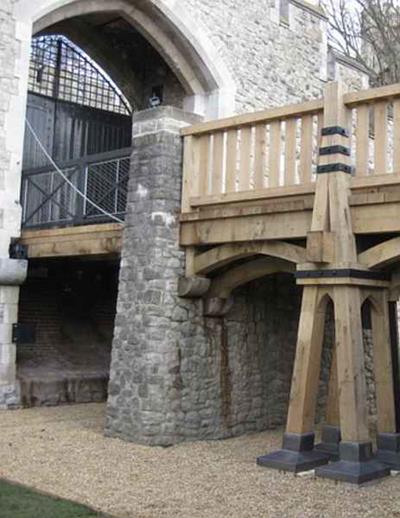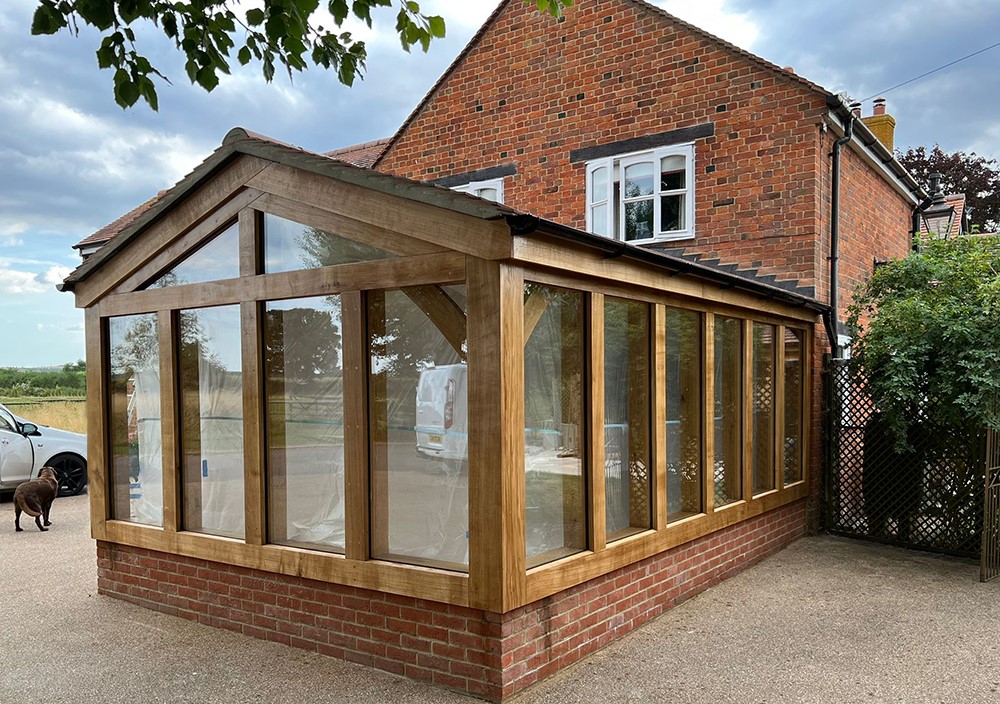Green Oak Beams
Green oak beams are freshly cut from the log. They have a high moisture content, and are used for traditional timber construction. We cut green oak for trusses, posts and bespoke projects using timber from well managed woodlands in England and France.
Species
Quercus robur
Source
England and France
Surface finish
Sawn or planed
Sections available
Up to 9.5mt long. Up to 500mm x 500mm section size
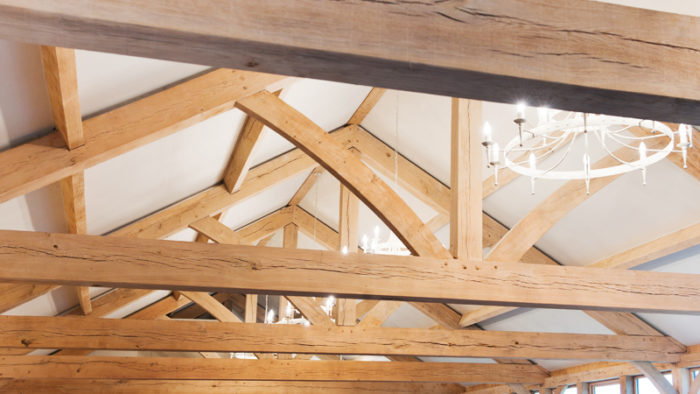
Green Oak Beams
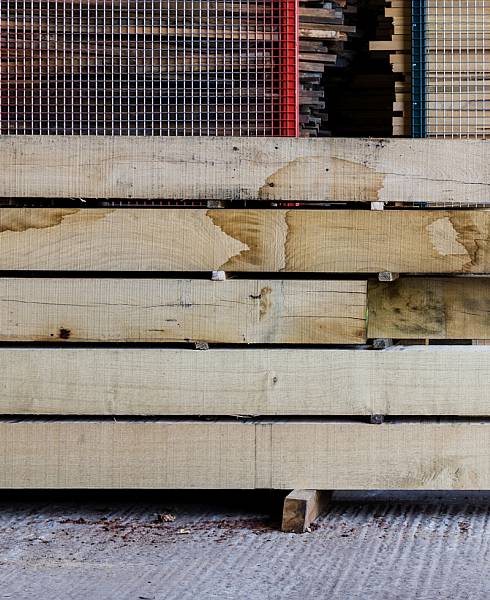
Green Oak Beams
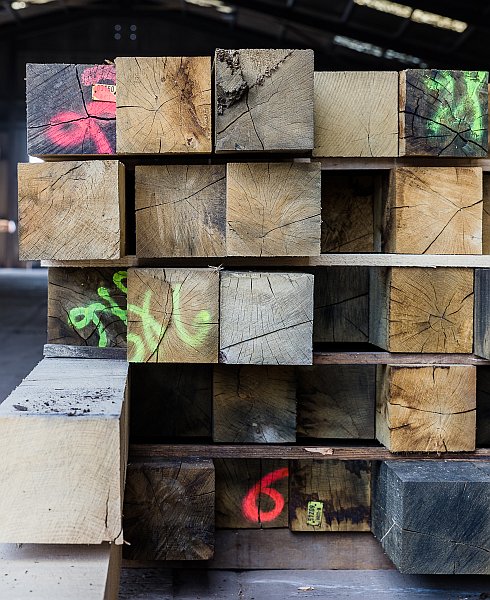
Green Oak Beams
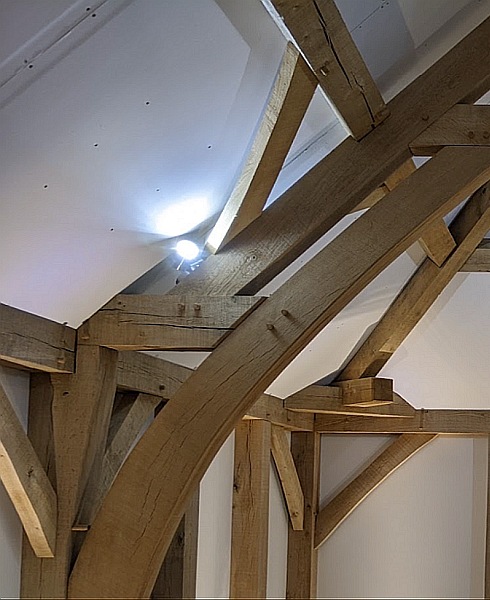
Green Oak Beams
About Green Oak
Oak from English forests has been used in building construction for many centuries and original oak beams continue to support structures more than 500 years old. The popularity of English oak can largely be explained by the availability of the trees and durability of the wood.
As a natural building material, oak is extremely hard to destroy: large sections will resist fires intense enough to melt metal and will flex to accommodate the natural movements of a building.
Although English oak stocks have been depleted over the centuries by various wars and the industrial revolution, there continues to be a healthy supply of logs from private estates and, to a lesser extent, the Forestry Commission. With an increasing emphasis on sustainable forestry and general good practice among forest owners, we believe that oak forests will continue to thrive in this country.
However, where specifications demand, Vastern Timber also sources oak logs from well-managed woodlands in France.
Oak beams are usually cut from trees between 90 and 120 years old, ideally felled during the winter when the sap is down. The beams for construction tend to be fresh sawn or green which means that they are in fact wet and while this is of concern to many architects because of oak’s natural tendency to shrink and split, it is the ideal way to use the timber.
Why use Green Oak?
It is easier to cut joints and peg holes when oak is freshly cut, before cracks have appeared in the wood. ‘Wet’ wood is easier to work with, more malleable and workable. Using green oak has a lower environmental impact than dry oak.
Why not dry?
Oak dries very slowly and is consequently very expensive: a large beam can take 8 – 10 years to fully dry. Dry oak is very hard and therefore difficult to work. Trying to cut and drill dry oak will blunt tools and exhaust arms very quickly.
There are no standard framing sizes and it is therefore difficult to predict which sizes and lengths will be required years down the line. Having said that, we do stock semi-seasoned and seasoned oak.
Call us to discuss your project
Technical Specification
Species
Quercus robur
Moisture content
Wet (Green)
Surface finish
Sawn or planed
Sections available
Up to 9.5mt long. Up to 500mm x 500mm section size
Grading
Grading
Graded under BS5756
Grades available
Visual grade
Equivalent mechanical grade Notes
TH1 D30
Top grade for sections equal to or less than 20,000mm2
TH2 –
Lower grade for sections equal to or less than 20,000mm2
THA D40
Top grade for sections of more than 20,000mm2
THB D30
Lower grade for sections of more than 20,000mm2
Durability
BS EN 350 Durable (Heartwood only)
Weight
Approximately 1000KG / M3 when wet and 700KG / M3 when dry
Shrinkage
Less than 0.5% along the length. Between 5% and 7% across the section
Modulus of elasticity
Green oak E = 8,000 N/mm2
Dry oak
E = 10,000 N/mm2
Working properties
Green oak is generally easy to work but becomes increasingly difficult as it dries.
Chemical properties
Oak contains tannic acid which will corrode ferrous metals. When the two come into contact, a blue sludge is formed which will stain the oak. Use stainless steel fixings.
Insect attack
The ambrosia beetle can attack the wet timber (30% moisture +). However, the beetle will die as soon as the wood dries to less than 30%. Re-infestation will not occur. Other dry wood will not be affected. Sapwood may be attacked by the powder post beetle (Lyctus spp). However, sap is normally excluded from oak beams.
Fixings
All fixings used in conjunction with green oak should be stainless steel.
Fire
Surface spread of flame class 3 (BS 476-7)
Further information
Green oak in construction. 2007. Trada Technology. www.trada.co.uk
Vastern Timber is not able to offer structural engineering services or advice on section sizes required for particular applications.
Disclaimer
While the utmost care has been taken to provide accurate information, Vastern Timber shall not be held responsible for any consequences arising from any errors or omissions on this website nor for any damages resulting from the use of the information.



